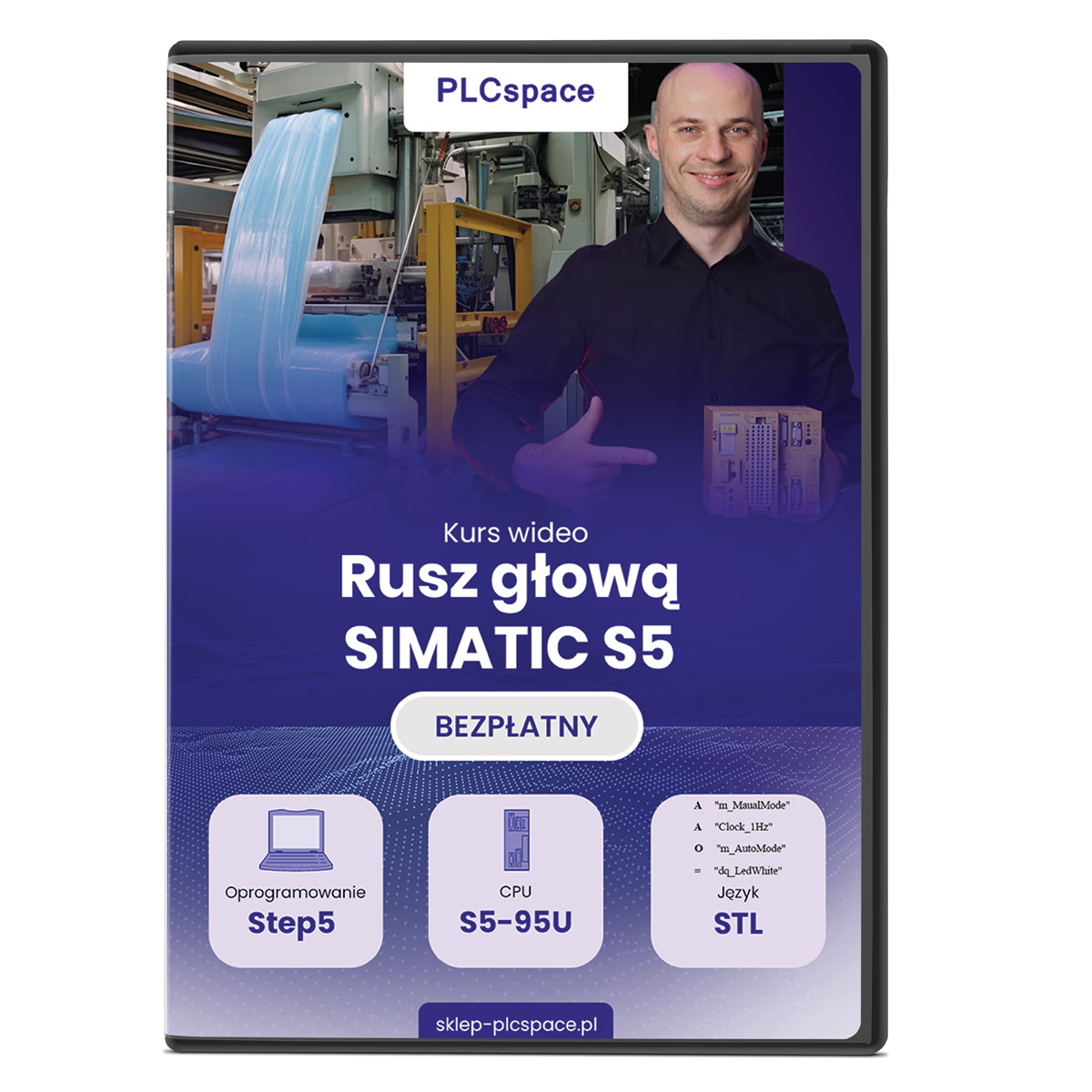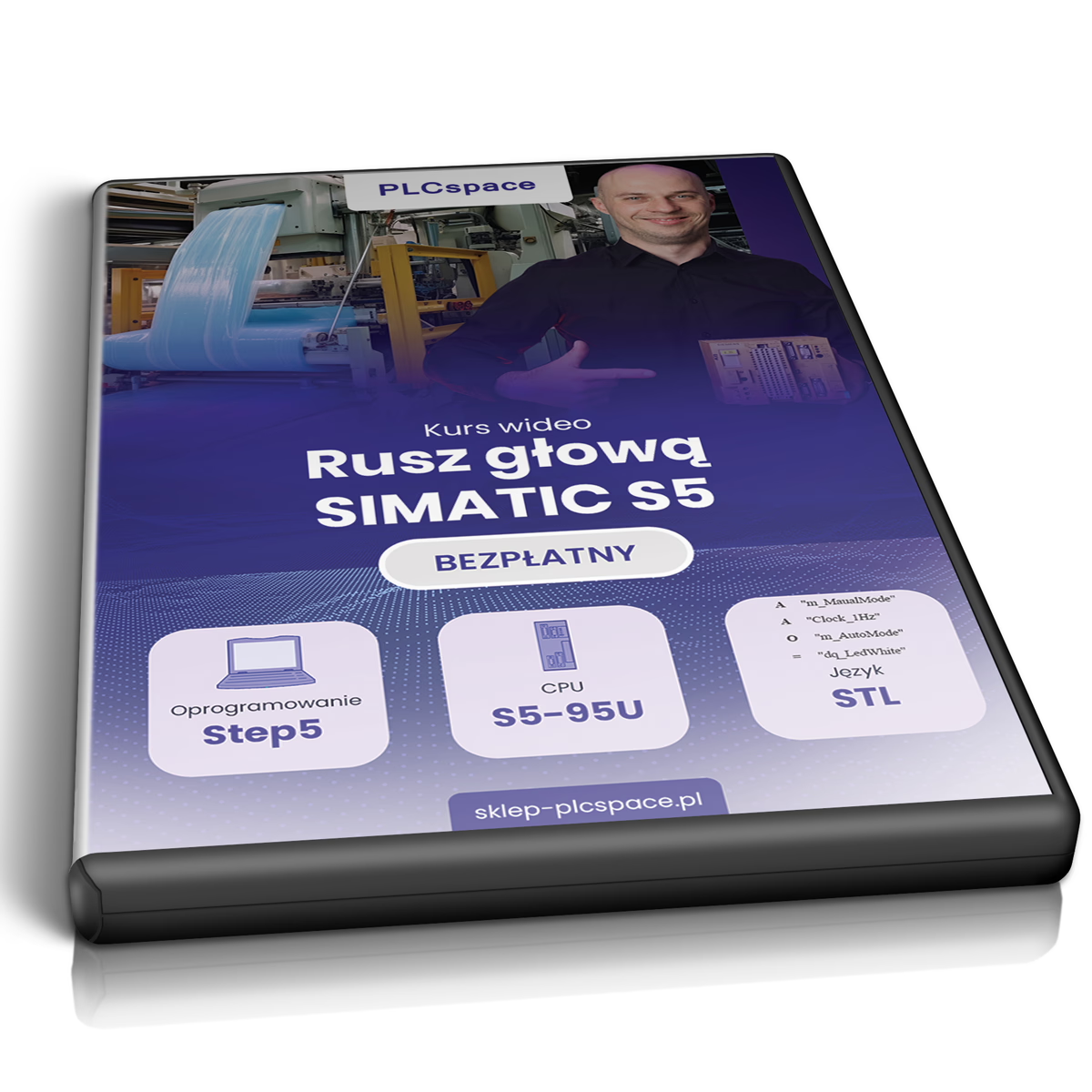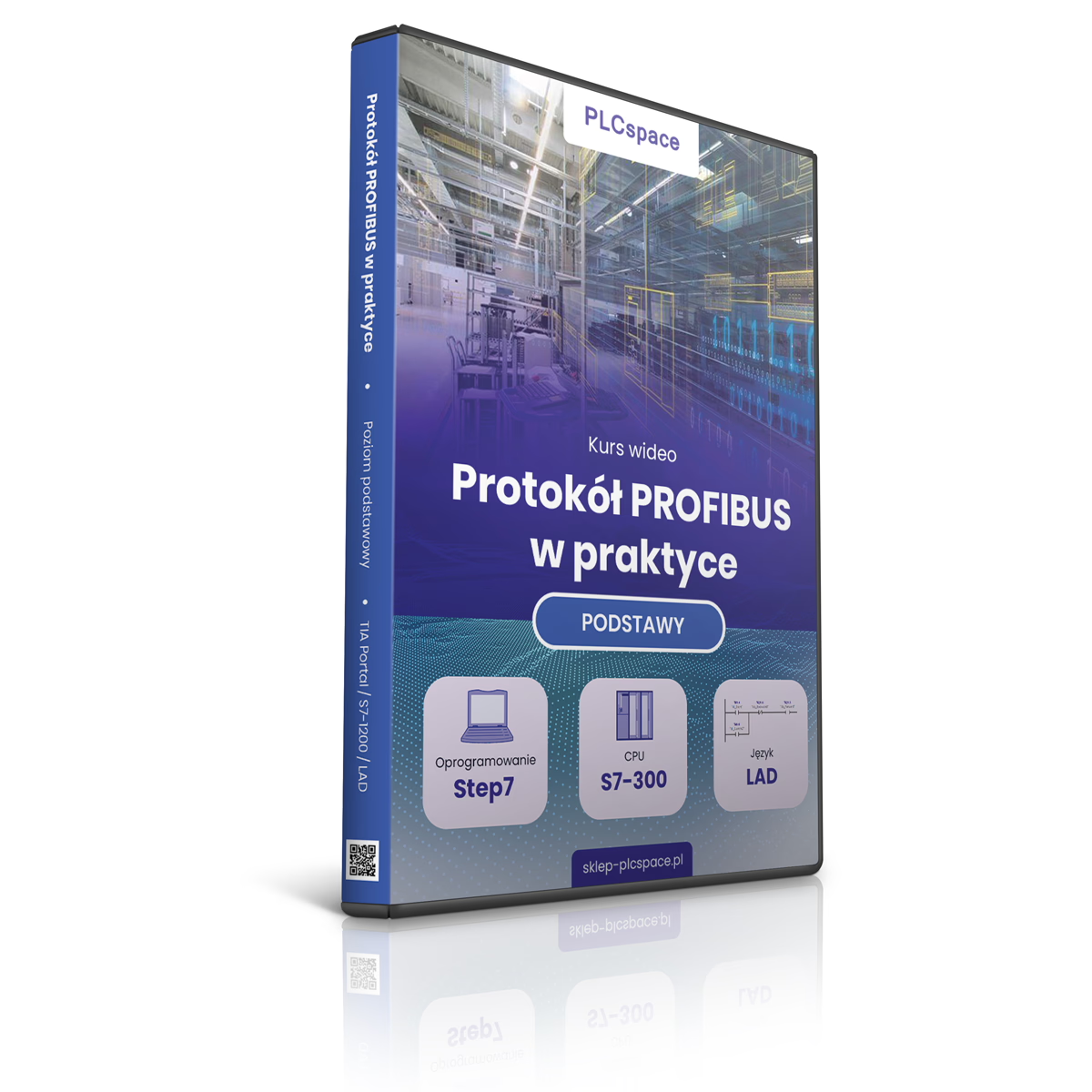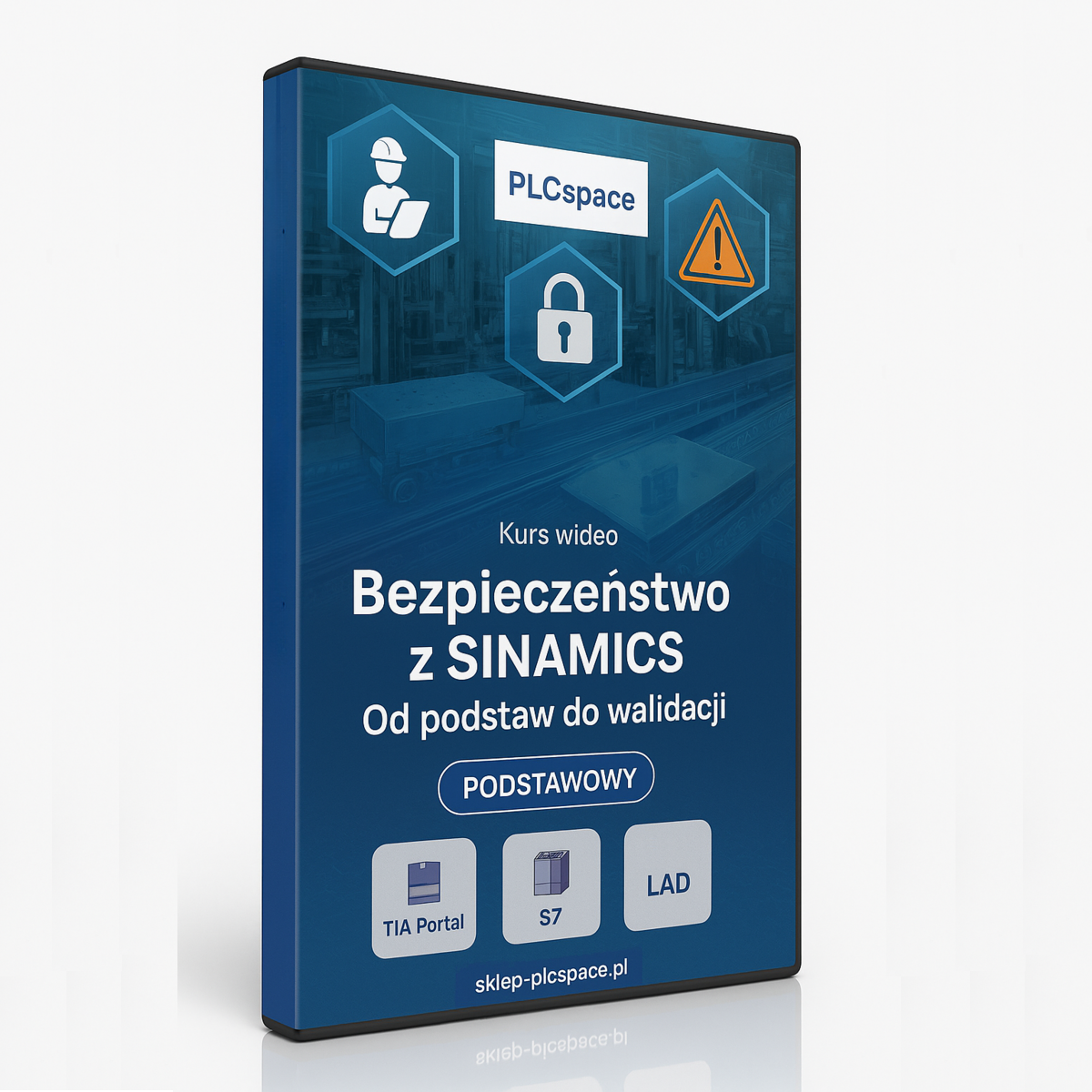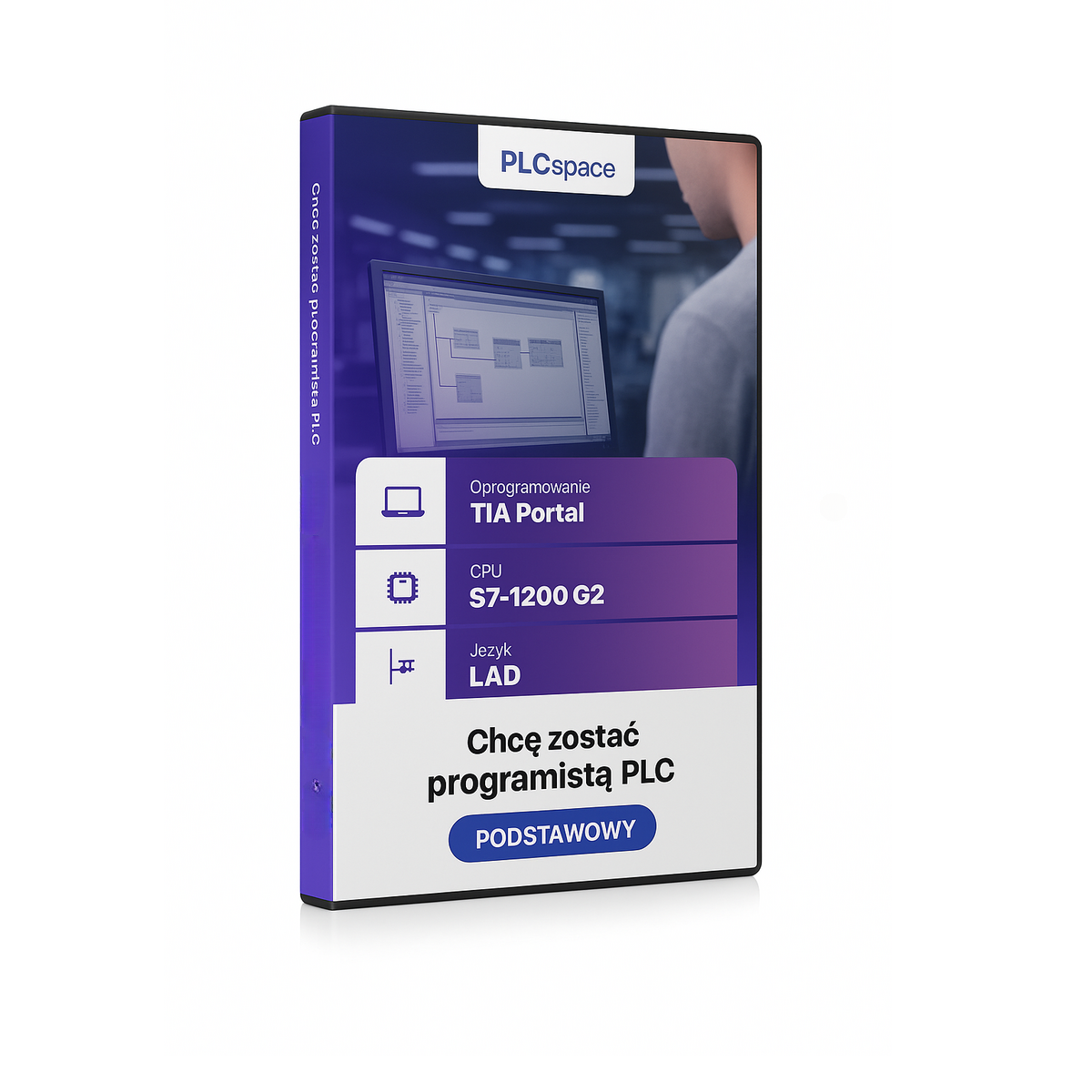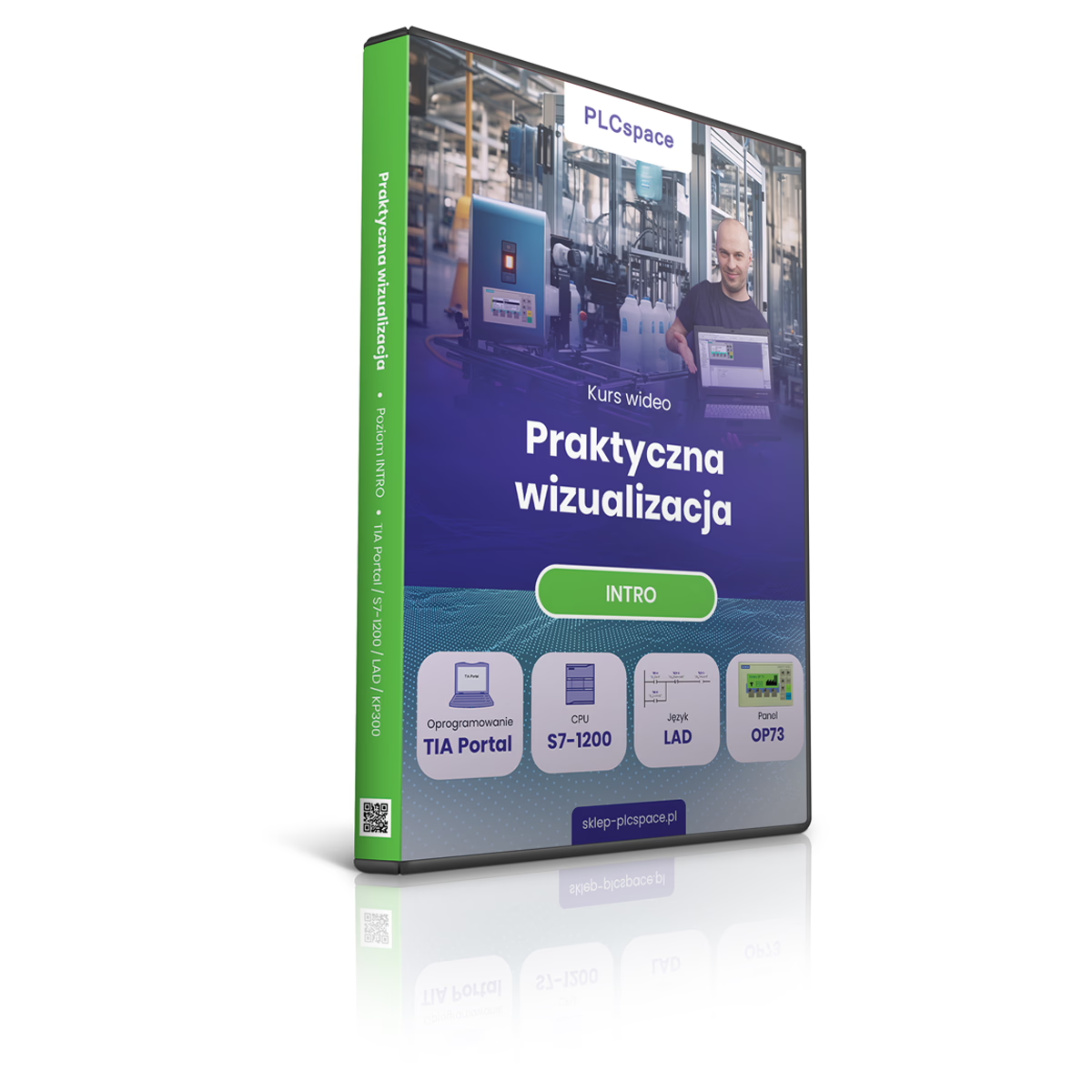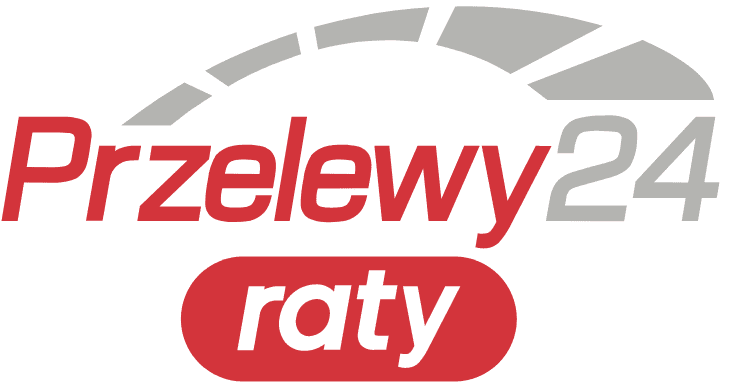Move your head - SIMATIC S5
- Level:
The development environment used in the course
- Software:
Core unit family used in the course
- CPU:
A set of rules that are used to develop programme code
- Language:
Frequency converter (inverter) family used in the course
- Drive
0.00 €
What do you get when you enrol on a PLC programming course?
Nie musisz obawiać się, że zostaniesz zalewany zawiłymi treściami, które mogą Cię przytłoczyć. Nasz bezpłatny kurs programowania PLC SIMATIC S5-95u w języku STL „Rusz głową – SIMATIC S5” został starannie przygotowany, aby wprowadzić Cię w świat podstaw programowania sterowników przemysłowych. Głównym celem tego szkolenia jest zapewnienie Ci solidnych fundamentów oraz przekazanie niezbędnych umiejętności potrzebnych do pracy z PLC. W ramach kursu otrzymasz dostęp do bogatego materiału edukacyjnego, wsparcia ekspertów oraz praktycznych ćwiczeń, które pozwolą Ci rozwijać umiejętności programowania sterowników S5-95u. Dołącz do nas już teraz i zdobądź cenne doświadczenie w programowaniu PLC! W ramach szkolenia otrzymasz:
Kurs programowania PLC SIMATIC S5-95u firmy Siemens, poziom od zera – oprogramowanie STEP5
Zaciekawiła Cię tematyka programowania PLC? Czy nigdy nie miałeś do czynienia ze sterownikami przemysłowymi? Świetnie! Ten bezpłatny kurs dedykujemy specjalnie dla Ciebie. Poznasz najpopularniejszy sterownik Siemens – SIMATIC S5-95u.
O czym jest szkolenie z programowania sterowników logicznych PLC Siemens SIMATIC S5-95u w języku STL?
Nasz kurs programowania sterowników PLC Siemens SIMATIC S5-95u w języku STL to kompleksowe wprowadzenie do automatyki i programowania PLC. Wykorzystujemy popularny sterownik z serii SIMATIC S5-95u oraz środowisko programistyczne STEP5. Nauczysz się prawidłowego podłączania sprzętu elektrycznego oraz instalacji oprogramowania. Zostaniesz wprowadzony w podstawy programowania sterowników PLC, gdzie praktycznie wykorzystasz podstawowe instrukcje programistyczne. To kurs, który dostarczy Ci niezbędną wiedzę w dziedzinie automatyki przemysłowej. Dołącz już teraz i odkryj fascynujący świat programowania PLC S5-95u w języku STL.
Knowledge test:
Is this course for you? Take this test MULTIPLE choice to check it out.
Key information about the course
Wykonując praktyczne zadania osobiście przekonasz się, że programowanie nie jest tak trudne, jak mogło się początkowo wydawać.
Biorąc udział w szkoleniu, zagłębisz się w fascynujący obszar przemysłu i zdobędziesz kluczowe wiadomości z tej branży.
Rozwiniesz swoje umiejętności, korzystając z fachowej wiedzy innych programistów.
Poznasz instrument, który umożliwi Ci konfigurowanie PLC, tworzenie programów oraz programowanie urządzeń. W końcu będziesz mógł zaobserwować efekty własnej pracy.
Otrzymujesz kompleksowy zestaw podstawowej wiedzy, który pomoże Ci zaoszczędzić czas i uniknąć typowych pomyłek podczas pracy z SIMATIC. S5.
Dlaczego warto wybrać nasz kurs automatyki przemysłowej i programowania PLC w języku STL?
Zachęcamy do udziału w bezpłatnym szkoleniu z programowania PLC S5-95u w języku STL, które wyróżnia się innowacyjną i sprawdzoną metodologią, opracowaną na bazie bogatego doświadczenia w pracy z uczestnikami. To szkolenie oferuje wyjątkową okazję do zdobycia praktycznej wiedzy, niezbędnej do efektywnego programowania sterowników przemysłowych.
W trakcie szkolenia zdobędziesz szereg kluczowych umiejętności. Wprowadzimy Cię w fascynujący świat programowania PLC, dzięki czemu przekonasz się, że to nie jest takie skomplikowane, jak mogłoby się wydawać. Lekcje są starannie zorganizowane, skupione na praktycznych aspektach, abyś mógł pełni zrozumieć i zastosować zdobytą wiedzę w rzeczywistych scenariuszach.
Nauczysz się programować w języku STL, który jest potężnym narzędziem do tworzenia zaawansowanych programów sterowników. Poznasz środowisko programistyczne TIA Portal, co pozwoli Ci korzystać z zaawansowanych funkcji konfiguracyjnych i programistycznych.
W trakcie szkolenia opanujesz m.in. konfigurację modułów PLC S5-95u, tworzenie prostych programów na sterownika PLC rodziny SIMATIC S5-95u.
Nie potrzebujesz wcześniejszego doświadczenia w programowaniu. Nasze szkolenie zostało stworzone dla osób, które dopiero rozpoczynają swoją przygodę z PLC oraz dla tych, którzy chcą poszerzyć swoją wiedzę i umiejętności.
Dołącz do naszej społeczności uczących się i rozpocznij fascynującą podróż po świecie programowania PLC S5-95u w języku STL. Już teraz możesz rozpocząć swoją przygodę z automatyzacją przemysłową i zdobyć niezbędną wiedzę, by stać się ekspertem w tej dziedzinie. Zapisz się na bezpłatne szkolenie już dziś!
Example lesson from the course
Jak wygląda szkolenie z programowania w języku STL sterownika SIMATIC S5-95u w środowisku STEP5?
Najistotniejszą wiadomością jest fakt, że posiadasz możliwość samodzielnego praktykowania ćwiczeń na własnym komputerze. Szkolenie zostało dostosowane do każdego uczestnika, niezależnie od poziomu ich wiedzy. Rozpoczynamy od podstaw, niezbędnych do zrozumienia tematu, a następnie prezentujemy różnorodne zadania wraz z ich objaśnieniem. Ćwiczenia są tak zaprojektowane, aby zachęcać do samodzielnego rozwiązywania problemów.
Kurs programowania PLC Siemens SIMATIC S5-95u składa się z sekcji tematycznych, z których każda jest oddzielnym modułem. Znajdziesz tam szczegółowe opisy dotyczące każdego zagadnienia poruszanego podczas szkolenia.
Spis treści został starannie opracowany, aby tworzyć spójny ciąg myślowy.
Lista modułów szkolenia
Software and hardware used
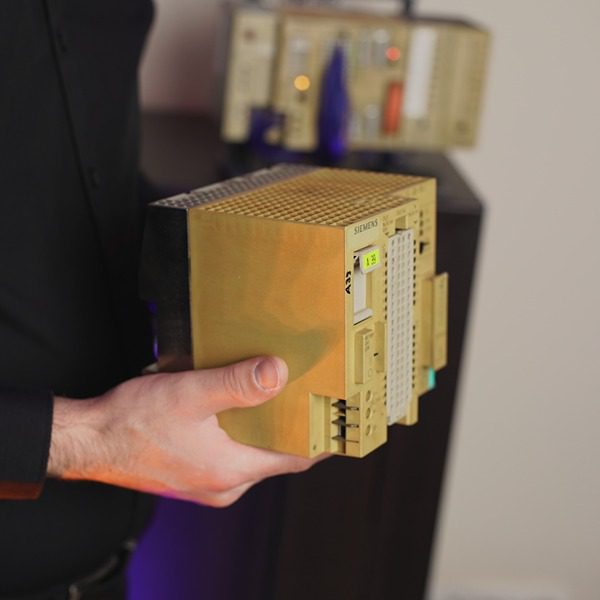
CPU S5-95u
The SIMATIC S5 system family includes programmable controllers of all performance levels, i.e. from the simplest and smallest to advanced PLCs. SIMATIC S5-95u are particularly suitable for automation tasks where the control system tasks are quite simple (high demands on response times and additional functions).
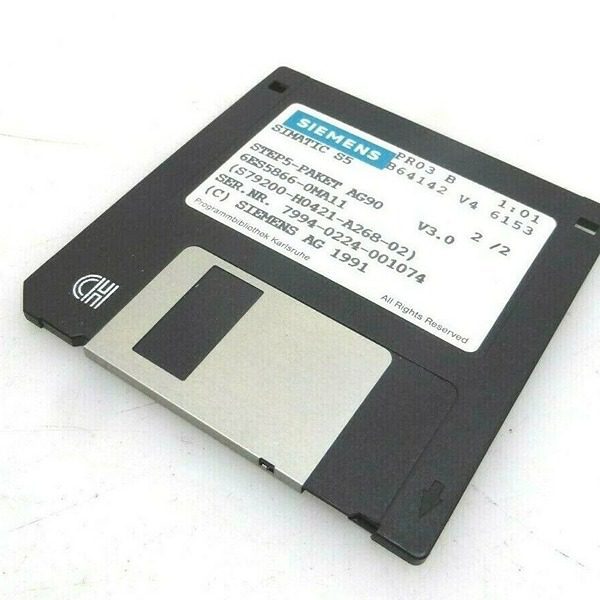
Step5 software
The Step5 programming tool is the software for the hardware of the SIMATIC S5 family. It allows you to create hardware descriptions (hardware configuration) and test program code for all S5 PLCs. In addition, documentation for the entire automation project can be prepared.
What will you be able to do after completing the course?
Bez względu na wybraną drogę kariery zawodowej, zakończenie tego szkolenia przyczyni się do realizacji Twoich zawodowych aspiracji i podniesie Twoje umiejętności w obszarze programowania sterowników PLC. Zapoznanie się z omawianą tematyką programowania stanowi pierwszy etap w objęciu stanowiska:
Pamiętaj, że samo zapoznanie się z teorią to tylko początek. W tym kursie skupiamy się głównie na praktycznym zastosowaniu wiedzy. Dzięki temu szybciej opanujesz umiejętności praktyczne, wystarczy poświęcić czas na przerobienie materiałów i ćwiczenia. Poprzez praktykę utrwalisz zdobytą wiedzę i nabierzesz pewności w programowaniu PLC rodziny SIMATIC S5-95u w języku STL. Naszym celem jest, abyś nie tylko zrozumiał teorię, ale także umiał ją efektywnie zastosować w praktyce. Zachęcamy do aktywnego uczestnictwa i regularnych ćwiczeń, co pozwoli Ci osiągnąć lepsze rezultaty i stać się pewnym i kompetentnym programistą PLC.
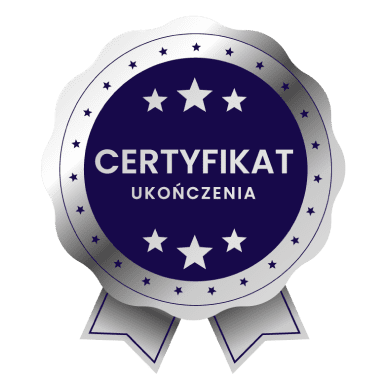
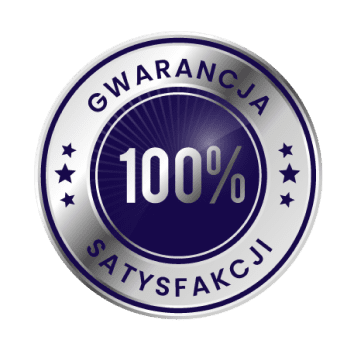
Guarantee
and certificate
If, after 14 days of purchase, you find that it is not for you, I will refund 100% of the course price. Upon completion of the course, you will receive a certificate in two languages - Polish and English.

Frequently asked questions
-
Do I need to have some basic knowledge of programming and PLC?
No. It's all in the course. We start from scratch.
-
Is it worth starting to learn with a Siemens PLC?
Yes. Siemens PLCs are in about 95% factories in Poland. The situation is similar in Europe. It is useful to have at least a general idea of this hardware and programming environment.
-
How long will I have access to the course?
Indefinitely.
-
Does enrolling in a course commit you to anything?
No. It is voluntary and at 100% for 0 PLN. It is possible to cancel at any time.
-
Is it worth learning PLC programming?
Everything nowadays lives up to automation to increase productivity and repeatability. Companies want to produce for 24 hours. You need machines and process lines to do all this. Someone has to program this, so you need PLC programmers. If you want to become a PLC programmer, this course would be a good way to start.
-
Why have I created a free course on PLC programming?
I think that anyone in the automation/electrical/mechanical field as well as pupils and students in these technical fields should familiarise themselves with this subject. Then you will be able to say whether this is for me. Whether I like it.
-
Who is this course for?
Dla osób BEZ doświadczenia z programowaniem. Dla ludzi którzy nie mieli styczności z PLC firmy Siemens. Dla wszystkich którzy chcą krok po kroku przejście etapy związane z pierwszym uruchomieniem najpopularniejszy obecnie PLC z rodziny SIMATIC S5-95u.
Buy as a set and save
Select at least 2 courses from the list and the first free book item (three selections in total) and an automatic discount of 25% will be calculated in your basket.
If you want to find out more about a particular course, click on its name and the page will take you to its offerings.
Companies that have benefited from our courses




































Feedback from students
 Stanislaw
Stanislaw
What sets this course apart is the opportunity to acquire practical, concrete knowledge. Everything is clearly explained. Definitely recommended!
 Marcel
Marcel
After going through the course, I know what the components of the programming environment are and what to do step by step. Now I feel confident and know what I am doing
 Leon
Leon
Course delivered in a very accessible way. Contains a lot of interesting and useful information.
 Michael
Michael
I can honestly recommend the course. It is solid and factual knowledge. I will definitely be buying more.
 Victor
Victor
Thanks to the course, I have decided to go further in this direction. The goal is to look for a more challenging and better job
 Peter
Peter
The course prepared by Mr Tomasz is distinguished by its high level of content and meticulously prepared lessons. They are planned in a clear and sensible manner, making it easier to assimilate knowledge and return to the material if necessary. An additional advantage is the possibility of a free consultation.
 Nikodem
Nikodem
Definitely recommended! The facts themselves, no unnecessary dwelling on issues.
 Ignatius
Ignatius
This is my first course, certainly not my last. I am impressed with the substantive quality of the knowledge.
 Tymon
Tymon
Everything clearly explained, you can really learn a lot. Lots of practical information and examples to help you remember everything. In my opinion, it is worth using this form of learning because you can learn anytime and anywhere. It is practical and convenient.
You may also be interested in:
- Level:
The development environment used in the course
- Software:
Core unit family used in the course
- CPU:
A set of rules that are used to develop programme code
- Language:
Frequency converter (inverter) family used in the course
- Drive
228.77 €
- Level:
The development environment used in the course
- Software:
Core unit family used in the course
- CPU:
A set of rules that are used to develop programme code
- Language:
Frequency converter (inverter) family used in the course
- Drive
228.77 €
- Level:
The development environment used in the course
- Software:
Core unit family used in the course
- CPU:
A set of rules that are used to develop programme code
- Language:
Frequency converter (inverter) family used in the course
- Drive
274.57 €
- Level:
The development environment used in the course
- Software:
Core unit family used in the course
- CPU:
A set of rules that are used to develop programme code
- Language:
Frequency converter (inverter) family used in the course
- Drive
22.67 € Pierwotna cena wynosiła: 22.67 €.11.22 €Aktualna cena wynosi: 11.22 €.

